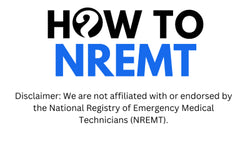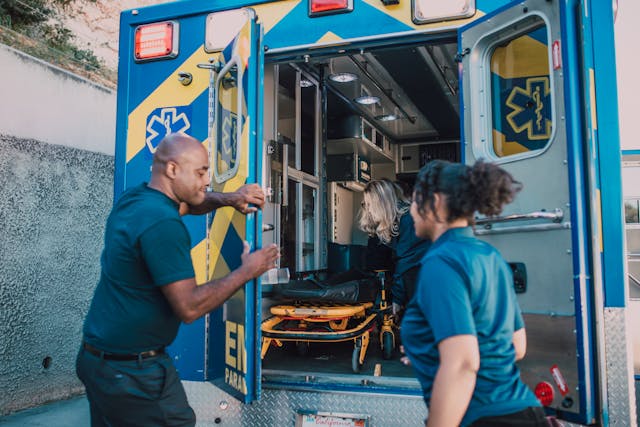In South Dakota, EMTs respond to accidents in open plains, small towns, and on highways with calmness and confidence. When someone in Sioux Falls, Rapid City, or anywhere else in the state needs help, those EMTs truly make a difference. If you’re looking to take the first step toward this role, this guide is for you.
We’ll walk you through the steps involved in getting certified. From meeting basic requirements to passing theNREMT cognitive exam, this guide outlines everything you need to know to become an EMT. The NREMT cognitive examisn’t just another test; it tests your mindset. Study smart, and you’ll pass. Study hard, and you might still fall short.
Let's go through the full process, including the best way to study, step by step.
Step 01

Meet the Basics First
Before enrolling in any EMT course, you must:
- Be at least 18 years old
- Hold a high school diploma or GED
- Have a current CPR certification (BLS for Healthcare Providers)
- Be physically and mentally fit for EMS duties
- Pass a criminal background check
- Other requirements, such as residency requirements, a valid driver’s license, and specific training certifications, may also be prerequisites.
Once you meet these basic requirements, you can move forward with confidence.
Step 02

Choose a State-Approved EMT Course
The candidates must train in a state-approved EMT program. Training in South Dakota is overseen by the South Dakota Department of Health, Division of EMS. You can find approved courses at regional health systems, community colleges, and local EMS training centers. Coursework includes clinical experiences, hands-on skills labs, and classroom instruction. When you finish this training, you'll be eligible to take the NREMT cognitive exam.
Step 03

Master the NREMT Cognitive Exam
The NREMT cognitive exam is designed to measure how well a candidate performs under pressure. It doesn’t just test your knowledge; it also assesses your ability to apply that knowledge in clinical scenarios. It is a computer-adaptive test with 70 to 120 questions, assessing performance in five main areas:
- Scene Size-Up and Safety
- Primary Assessment
- Secondary Assessment
- Patient Treatment and Transport
- Operations
Note: Items related to pediatric patient care are integrated throughout all domains.
Understanding the NREMT Cognitive Exam
This test demands decisions rather than definitions:
- You’ll choose the most appropriate actions, not generic correct answers
- You’ll navigate patient scenarios with close distractions
- You’ll encounter interactive question types like TEIs
This requires deeper study. You need understanding, strategy, and practice. This test isn’t just about rote memorization. It requires quick decisions and good reasoning. That’s why the best way to study for the NREMT is to simulate the real experience:
- Use NREMT practice exams that mimic the actual test
- Study with a recognized NREMT prep class for guidance
- Seek focused help from an experienced NREMT prep tutor
This combination is how the most prepared students succeed.
Step 04

Submit Your South Dakota EMT Application
After passing the NREMT cognitive exam, apply to the South Dakota Department of Health. You must submit the following documents along with your application:
- Proof of EMT course completion
- NREMT cognitive exam results
- CPR certification
- Background check
- Completed license application and fee
Once approved, you are officially certified to work as an EMT in South Dakota.
Step 05
Maintain Your EMT Certification
South Dakota EMTs must renew their license every two years. You’ll need the following to renew your licensure:
- A valid CPR certification
- Required continuing education hours
- A valid NREMT credential or proof of meeting state renewal requirements
Letting your certification lapse requires re-testing, which can delay your practice. Stay current and ready.
National vs. South Dakota EMT Certification
Here’s a comparison to clarify requirements at the national and state levels:
| Requirement | NREMT | South Dakota |
|---|---|---|
| NREMT cognitive exam | Required | Required |
| Current CPR certification | Required | Required |
| State-approved Training | Required | Required |
| ALS psychomotor skills test | Not required | Required |
| Background check | Not required | Required |
| State application | Not applicable | Required |
Note: The ALS psychomotor skills test is no longer required by the National Registry. It’s only a state-level requirement.

- Choosing a selection results in a full page refresh.




